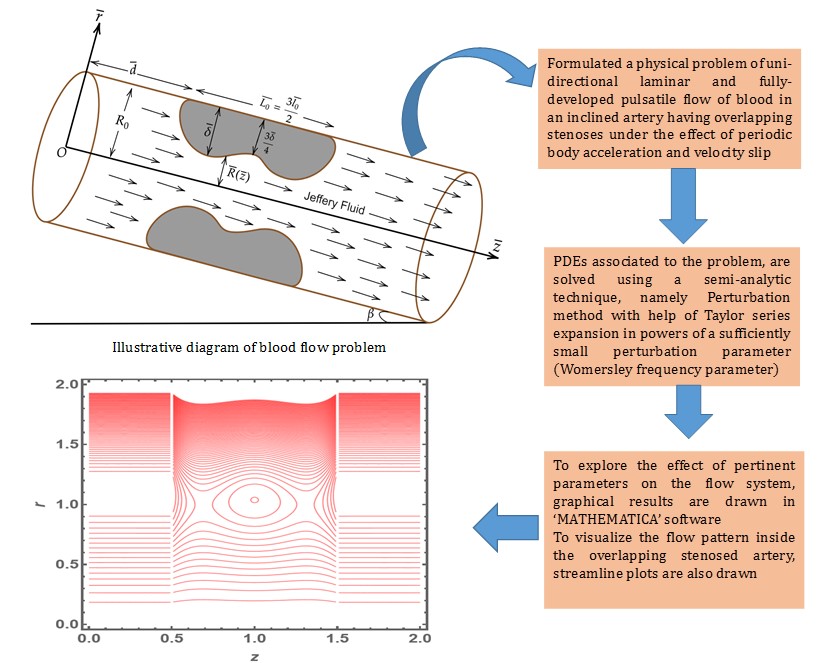
A Hemodynamic Perspective to Analyze the Pulsatile Flow of Jeffrey Fluid through an Inclined Overlapped Stenosed Artery
Pramod Kumar Yadav, Muhammad Roshan, and A. N. Filippov
Том 86 №4
332 просмотров;
In the present work, the impact of periodic body acceleration on the unsteady flow of blood in an inclined artery has been investigated. The blood is represented by an incompressible, viscous, non-Newtonian Jeffrey fluid. The artery is assumed to have mild overlapping stenoses inside its lumen. The perturbation method is used to solve the governing nonlinear coupled partial differential equations. Here, the Womersley frequency parameter is considered small enough for blood flow through arteries. Analytic expressions for the wall shear stress, stress at the critical height of stenosis, velocity profile, volumetric flow rate, pressure drop, resistive impedance, and effective viscosity are obtained using the perturbation technique. Regarding different flow parameters, the effects of body acceleration, pulsatility, the non-Newtonian character of blood, and velocity slip are examined and graphically depicted. It is concluded from the present analysis that the flow impedance rises when the stenosis reaches its critical height, but it falls as the velocity slip at the wall increases. It is also observed that when body acceleration increases, flow rate, velocity, and shear stress near the critical height of stenosis all rise, whereas wall shear stress decreases as body acceleration rises. Here, we also analyzed the flow pattern of the non-Newtonian Jeffrey fluid when it passes through the overlapped stenosed artery with the help of streamlines. The results of the present problem have been verified with the previous existing results in the literature.